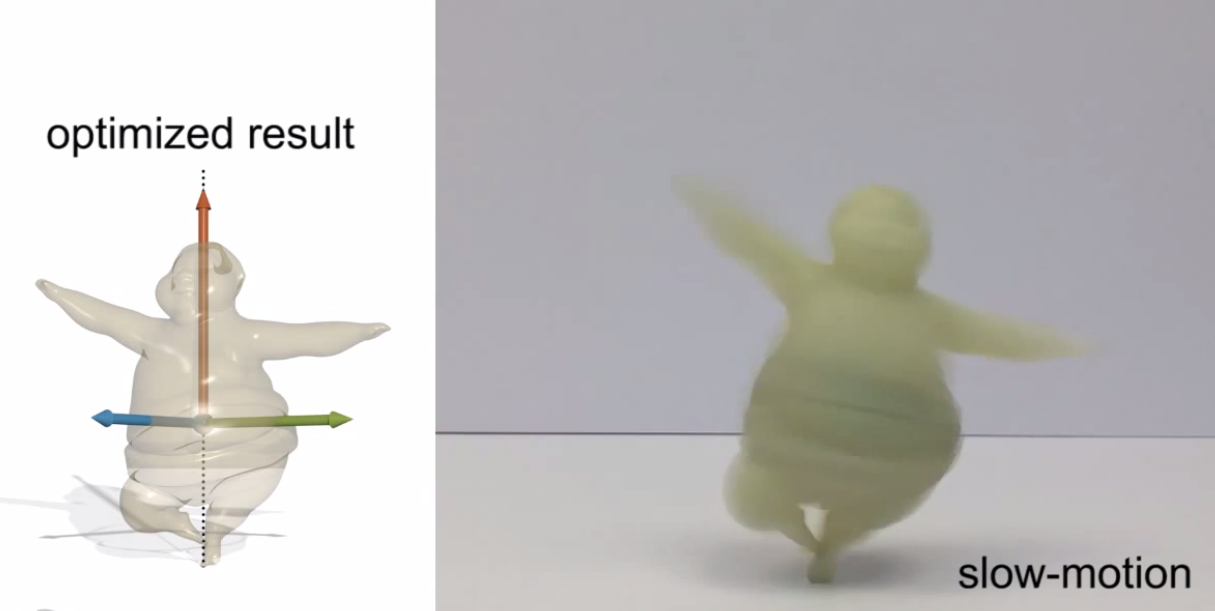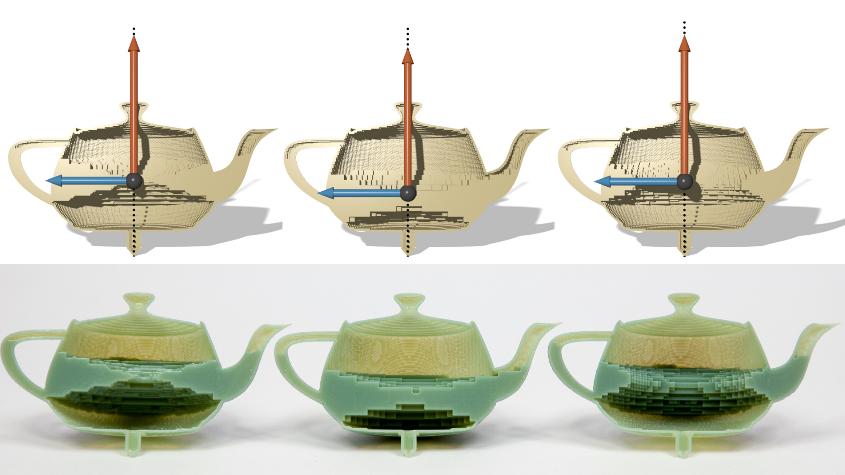Apparently ‘Disney Researcher’ is a job that really exists, and a group of them have just developed a way to calculate the exact distribution of mass within an object, in order to control its center of gravity. This allowed them to 3D print asymmetrical shaped tops, that spin despite their odd, off center shapes.
The spinning top is one of the oldest toys in history, with examples dating back thousands of years and examples independently developed in virtually every culture. They were used to entertain children, tell fortunes, gamble and even to divine the secrets of the gods. Tops are also one of the oldest examples of an understanding of the nature of physics. While many ancient cultures may not have had the words, or the math, to explain the way they work, they still understood that a top had to be a precise shape, be spun with a specific type of force, and would eventually come to a stop. Basically, tops work because they have a uniform shape and mass and are spun at a rate fast enough to allow that shape’s momentum to be temporarily more powerful than gravity. Tops are even still used today as an introduction to the physics of mass and inertia.
And thanks to a unique application of physics, Disney has created a method for turning oddly shaped toys into perfectly spinning tops. Disney Researchers Moritz Baecher and Bernd Bickel, along with Emily Whiting and Olga Sorkine-Hornung at ETH University, have created an algorithm that will tweak the meshes of a 3D object to create hollow spaces that counteract the uneven weight distribution caused by an irregular shape. The tweaked 3D object can then be 3D printed and, just like that, you have a breakdancing armadillo that spins for just as long as any traditional top would spin.

The algorithm is also able to calculate when an object needs to be printed, not just with hollow interior spaces,with a second, heavier, material at its top. You can see here, with the dancing sumo wrestler, that a metal piece was cast from a 3D printed mold and inserted into the top, giving it enough displaced mass to spin, despite it’s off center shape.
Here’s a great video explaining how the process works:
While this research is interesting, it isn’t like the world is clamoring for a better-designed top, so don’t expect Disney to flood the market with branded tops any time soon. But the algorithm can be applied to the construction of stationary toys, as wel,l by calculating the exact mass distribution needed to optimize stability. This will produce not just better toys, but will influence the production of statues, help create entire structures that seemingly defy the laws of physics, and could even influence how Disney constructs their robots and animatronic characters.
You can read more about Disney’s research on the appropriately named Disney Research website, and you can read the official paper on their experiments here.





